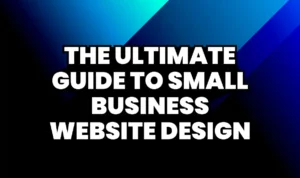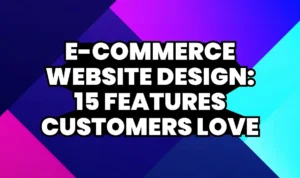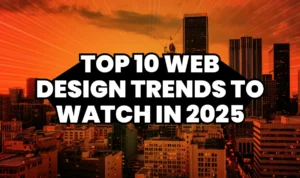When businesses talk about online growth, two terms usually come up: website design and SEO. Many think these are separate strategies, but the truth is they’re deeply connected. Your website design not only affects how users experience your site but also how search engines rank it.
At Devsking, we’ve helped brands transform their websites with smart design choices that directly boost SEO performance. This complete guide will show you how website design and SEO work together and why your business can’t afford to ignore their synergy.

1. Website Design and SEO: Why They’re Connected
A beautifully designed website is meaningless if it doesn’t rank on Google. Likewise, SEO won’t deliver results if your site looks outdated or is hard to use.
Modern SEO depends on user experience, which is shaped by design. Search engines analyze loading speed, mobile responsiveness, navigation, and engagement—all of which are determined by your website design.
2. Website Design and SEO: The Role of Site Speed
One of the most critical factors in website design and SEO is page speed. A slow-loading website increases bounce rates, which hurts rankings and conversions.
Techniques to improve speed include:
- Optimizing images
- Using lightweight code
- Choosing a reliable host like Dronahost
At Devsking, we specialize in speed optimization that aligns design with performance.
3. Mobile-First Design and SEO
Google prioritizes mobile-first indexing, meaning it ranks your site based on its mobile version. That’s why website design and SEO must start with mobile responsiveness.
A mobile-first site:
- Loads quickly on smartphones
- Has touch-friendly navigation
- Presents readable fonts and clear layouts
Failing at mobile design can tank your SEO, even if your desktop site looks perfect.
4. Website Navigation and SEO
Good navigation is a win for both users and search engines. Clear menus, logical structures, and intuitive pathways help visitors and crawlers alike.
For example, linking to your Portfolio or Blog from your homepage makes it easier for users to explore—and helps Google index your content.
5. Website Design and SEO: Content Structure Matters
Design isn’t just visuals—it shapes how content is consumed. Proper use of H1, H2, and H3 tags improves readability and tells Google what your page is about.
Well-structured content with keyword placement ensures both people and algorithms understand your topic.
6. Accessibility and SEO in Website Design
Accessibility isn’t just good practice—it also supports SEO. Features like alt text for images, proper contrast ratios, and keyboard-friendly navigation signal a high-quality site.
Search engines reward websites that are inclusive and user-friendly.
7. Website Security and SEO
Search engines prioritize secure websites. An SSL certificate (HTTPS) is now mandatory for ranking.
Working with trusted partners like Dronahost ensures your website design includes top-notch security, which strengthens both user trust and SEO.
8. Visual Elements and Their SEO Impact
High-quality visuals improve engagement, but oversized or poorly optimized images slow your site down. That’s why balance is crucial in website design and SEO.
Use compressed images, lazy loading, and descriptive alt tags to boost both performance and rankings.
9. Internal Linking and SEO-Friendly Design
A solid internal linking strategy enhances SEO and keeps visitors engaged longer. For example:
- Direct users to Request a Consultation
- Showcase success stories via Case Studies
- Highlight expertise through your Blog
Designing with these links in mind improves navigation and strengthens your SEO strategy.
10. Why Businesses Need an SEO-Friendly Design Partner
A DIY approach to web design can miss critical SEO elements. To truly succeed, you need a partner that understands how website design and SEO intertwine.
At Devsking, we’ve delivered results-driven websites that are visually stunning, SEO-optimized, and built for growth. From site speed to content strategy, our experts make sure your site ranks high and converts visitors into customers.
FAQs: Website Design and SEO
1. How does website design impact SEO?
Design affects speed, navigation, responsiveness, and usability—all ranking factors for SEO.
2. Why is mobile-first design important for SEO?
Google ranks based on the mobile version of your site, making mobile-first design essential.
3. Does page speed really affect SEO?
Yes, a slow site increases bounce rates and hurts rankings.
4. Can visuals improve SEO?
Yes, if optimized with alt text, compression, and fast loading.
5. What is internal linking in website design?
It’s linking between pages of your site to improve SEO and navigation.
6. Does accessibility affect SEO?
Yes, accessible sites are favored by search engines for inclusivity.
7. How important is SSL for SEO?
Very important—HTTPS is a confirmed ranking factor.
8. Do animations and interactive design help SEO?
Yes, if lightweight. They increase engagement, which boosts rankings.
9. Can poor website design ruin SEO?
Absolutely. Cluttered layouts, slow speed, or bad navigation hurt rankings.
10. Where can I get help with website design and SEO?
Our Devsking team specializes in combining design with SEO for real results.






